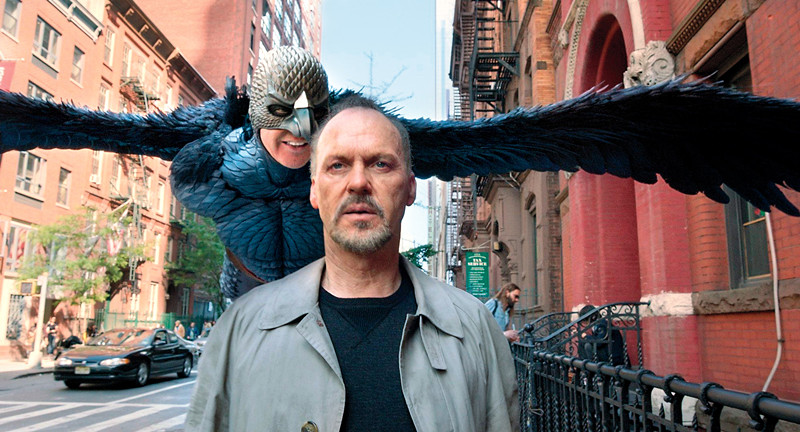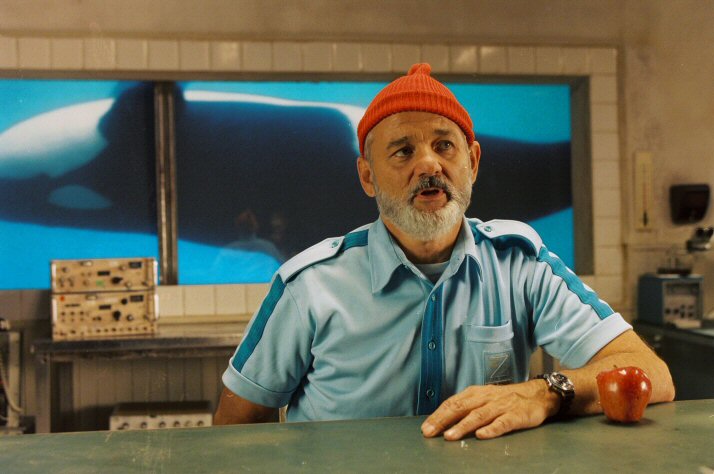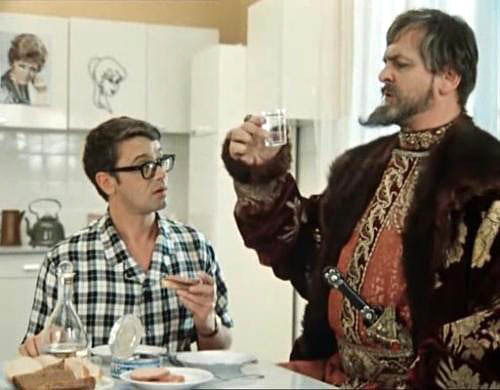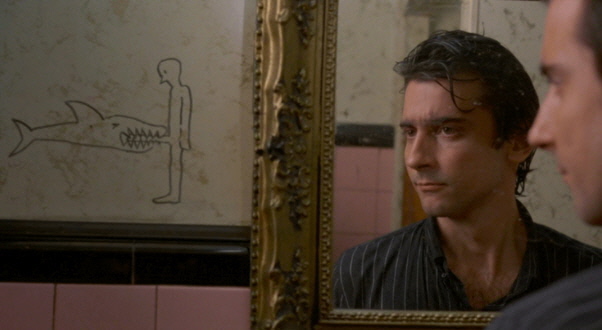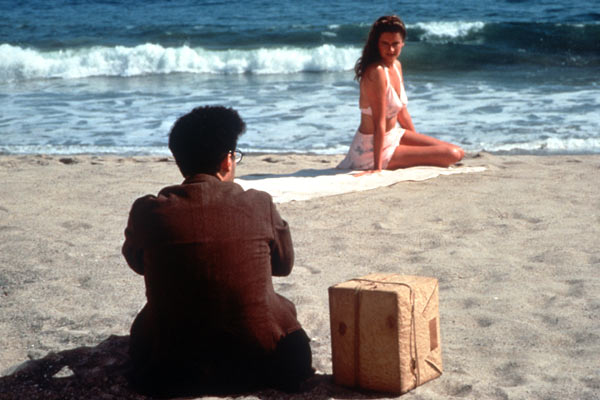Surreal films feature unexpected twists and turns that defy common reasoning and reality. Surreal comedies, by extension, also focus on impossible gags and overall plots that venture from common life. Often, these comedies are even labeled as absurdist do their wacky and baffling content. It is important to note, however, that not all goofy comedies are surreal; only the ones that feature absurd events that are treated as if they were commonplace.
Due to the nature of the comedic content, many of the films in this genre, and on this list, are dark comedies due to the fact that the absurd events usually damage people’s lives. The humor often lies in the randomness of the events and the rotten luck of the central character. Of course, there is also a great deal of classic comedy jokes and situations to accompany the surreal content.
The films on this list not only show the greatest potential for surreal comedy films, but they also display the wide variety in which the films can take form, featuring many different styles and moods of comedy.
10. The Life Aquatic With Steve Zissou (Wes Anderson, 2004)
Frequent Wes Anderson collaborator Bill Murray stars as Steve Zissou, a famed undersea explorer based on the legendary Jacques Cousteau, who, while filming an aquatic documentary loses one of his best friends to a rare “jaguar shark.” He then sets off with a new crew of colorful characters in search of this shark so he can kill it.
Included in this cast is Zissou’s son Ned, played by Owen Wilson, a journalist Jane, played by Cate Blanchett, and many other eccentrics. Along the way, their journey is interrupted by internal feuds of love, attacks from pirates and several abandonments.
The surrealism in this film comes more in form than in plot. Although there are a few impossibilities and invented species, the plot is for the most part straightforward and realistic. Like all Anderson films, however, there is an overpowering quirkiness that surrounds all of the events, making his characters stilted and quite unrelatable in some situations. They often behave irrationally and do things that most regular people would find questionable at best.
Another aspect of the film that greatly increases the surrealist feeling is Anderson’s vibrant and carefully thought out art direction. The combination of the stunning visuals of Cousteau’s own landmark documentaries like The Silent World with Anderson’s trademark sets and colors create an extremely beautiful, but somewhat fantastical, environment. The further the film goes on, the less natural the ocean feels and the film becomes more dreamlike.
9. Ivan Vasilievich: Back to the Future (Leonid Gaidal, 1973)
This classic Soviet comedy, directed by one of the most popular Soviet directors of the time and based on a story by the great writer Mikhail Bulgakov, is certainly one of the more radical films on this list. The film’s plot begins with an engineer who is building a time machine in his apartment. He successfully completes the machine but accidentally sends his landlord Ivan Vasilievich and a thief back in time to the court of Ivan the Terrible.
It also so happens that the ruler Ivan the Terrible travels through the warp into the modern day Soviet society and breaks the machine not knowing what it does. Because Ivan Vasilievich and Ivan the Terrible are doppelgangers, each must try and survive in the other’s position long enough for the engineer to fix the machine and set things right.
The plot could be considered more of a science fiction because it is simply a time machine story. THere are other elements, however, that distinguish it further from a simple comedy. There are prolonged dream sequences and shifts from color to black and white as well as bizarre behavior from the characters, most notably not treating their situation with the exasperation that most normal people would feel at such a time.
There is also, of course, the alienating effect given from being a forty year old Soviet film, filled with goofy slapstick bits and content, both thematic and stylistic, that differs heavily from anything made today.
8. After Hours (Martin Scorsese, 1985)
Although more known for his gangster films, Martin Scorsese also excels at making dark comedies, including The Wolf of Wall Street and The King of Comedy. After Hours, another comedy, may be his funniest ever. Griffin Dunne stars as Paul, a mild mannered office worker who is growing quite tired of his monotonous life.
One night at a cafe, he meets a charming, quirky girl named Marcy, played by Rosanna Arquette, He goes up to her apartment and meets her sculptor roommate, but leaves when he learns that Marcy is covered with horrific burns.
He tries to return home but is out of money so he goes to a bar to get change, only to find further complications. His night continues to escalate with more and more characters leading eventually.to a mob chasing him. After a tiring night of adventure he finds himself in front of his workplace right as the next day is beginning.
The characters besides Paul in this film are all far from normal. The events that transpire with these characters are similarly unlikely and somehow all connected giving a fatalistic element to Paul’s journey. It seems that the entire night and city are working against him, chasing him out.
The feel of helplessness and the alien environment of the city is still a possible story, but fraught with absurdity and surrealism. After Hours is a criminally overlooked Scorsese film, filled with some of the director’s greatest insights about New York City and the people inside it.
7. Barton Fink (Joel and Ethan Coen, 1991)
One of the Coen Brothers most interesting, but most overlooked films, is probably also the strangest project of their career. John Turturro stars as the titular character, an acclaimed playwright who is hired to move out to Hollywood to write movie scripts.
Not wanting to sell out completely, Fink insists on living in a rundown hotel in order to stay in touch with the real public. He soon finds, however, that he cannot make any progress on the first film he is assigned to, finding the place to be distracting and having no ambition to complete the project.
As he struggles, he meets several colorful characters including his wacky neighbor Charlie Meadows, played by John Goodman, and a drunk washed up writer, played by John Mahoney. His situation becomes considerably more complex when a girl he slept with turns up brutally murdered, setting Fink on a dark and bizarre path.
Many of the Coen Brothers’ films have an air of surrealism, especially their comedies like Raising Arizona and The Big Lebowski, but none are quite as out there as Barton Fink. While the plot does not feature anything impossible, the characters and the dark interruption into Fink’s like are baffling and far from feeling realistic.
The setting of the old hotel, ghost like in atmosphere, as well as Fink’s frequent dreams of a picture in his room surround the already out-there plot elements with even more alienating images. Written during a writer’s block of another Coen picture Miller’s Crossing, the film is a commentary on writing and Hollywood, as well as a bigger picture analysis of art and its creator.
6. Birdman (Alejandro G. Iñárritu, 2014)
On the surface, nothing about the plot of the film seems too bizarre. It follows Riggan Thomas, played brilliantly by Michael Keaton, who rose to stardom decades before for playing a superhero called Birdman in a series of films. After his run of success, however, Thomas had fallen from the public attention because he refuses to keep making the shallow films.
In order to regain success and earn more legitimate respect in the art world, Thomas tries to stage a Broadway play based a short story by Raymond Carver. He tries to balance managing the show, his audacious actors, his daughter and, most importantly, his inner stability which begins to fold under all the pressure.
The surreal element of this film comes from the character Birdman who manifests himself in Thomas’s mind, Thomas is pestered by Birdman’s voice and imagines that birdman follows him around. After a lot of torment, Thomas begins to delusion that he is Birdman sometimes, envisioning that he flies around the city like a bird. The clever way in which the story is told, however, makes it difficult to know if it is real or just in his mind. The many long tracking shots also add to the surreal atmosphere of the film.
